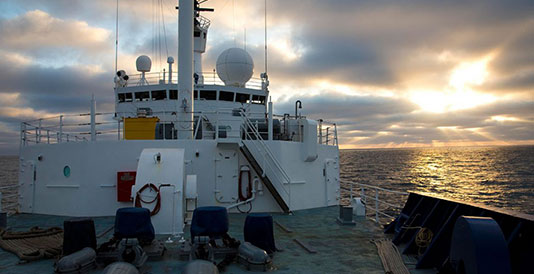 January 23, 2017 (Source: FSU) - A Florida State University researcher is taking a deep dive into the carbon cycle and investigating how carbon moves from the ocean surface to greater depths and then remains there for hundreds of years. Those findings could be critical as scientists work to better understand climate change and how much carbon the Earth’s atmosphere and oceans can store. In a paper published today in the Proceedings of the National Academy of Sciences (PNAS), FSU Assistant Professor Michael Stukel explains how carbon is transported to deeper waters and why it is happening more rapidly in certain areas of the ocean. “Algae in the surface ocean contribute half of the Earth’s photosynthesis, but most of the carbon dioxide they take up gets released back to the atmosphere when they die,” Stukel said. “The only way for this carbon to stay out of the atmosphere for a long period of time is to get it into the deep ocean. If it’s in the deep ocean, it can stay put for hundreds to 1,000 years. As the climate gets warmer, will the ocean take up more carbon dioxide or less? That’s what we ultimately need to know. But first we have to figure out how this natural process of oceanic carbon storage works.”
January 23, 2017 (Source: FSU) - A Florida State University researcher is taking a deep dive into the carbon cycle and investigating how carbon moves from the ocean surface to greater depths and then remains there for hundreds of years. Those findings could be critical as scientists work to better understand climate change and how much carbon the Earth’s atmosphere and oceans can store. In a paper published today in the Proceedings of the National Academy of Sciences (PNAS), FSU Assistant Professor Michael Stukel explains how carbon is transported to deeper waters and why it is happening more rapidly in certain areas of the ocean. “Algae in the surface ocean contribute half of the Earth’s photosynthesis, but most of the carbon dioxide they take up gets released back to the atmosphere when they die,” Stukel said. “The only way for this carbon to stay out of the atmosphere for a long period of time is to get it into the deep ocean. If it’s in the deep ocean, it can stay put for hundreds to 1,000 years. As the climate gets warmer, will the ocean take up more carbon dioxide or less? That’s what we ultimately need to know. But first we have to figure out how this natural process of oceanic carbon storage works.”











